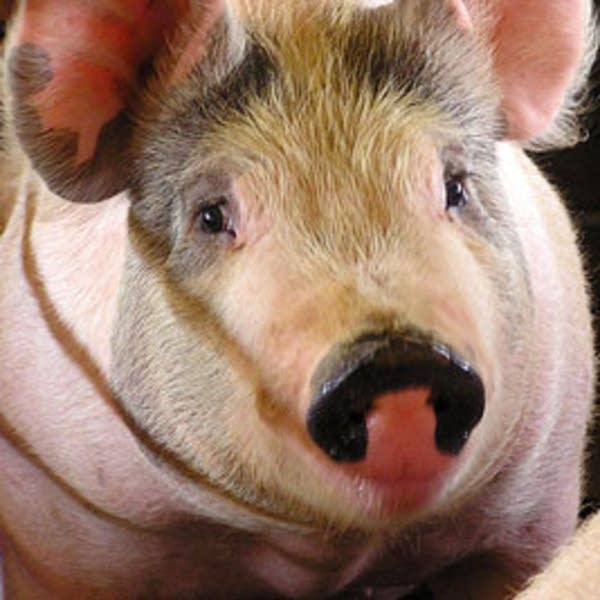Down market has Minn. hog producers squealing

Agriculture experts are still measuring the affects of the drought on the farmers, but it's likely that livestock producers will be the hardest hit.
The dry stretch has pushed the cost of corn and other major feed supplies into record territory, hurting practically any farmer raising animals. Hog farmers also are getting hit by falling pork prices.
That's produced a steady stream of red ink for many of the state's more than 4,000 hog producers. Among them is Curt Johnson, who sells about 20,000 pigs a year and is preparing to sell hogs at market next week — at a loss.
With his losses likely to average from $10 to $15 per pig, Johnson could lose more than $200,000 on his livestock over the next 12 months. But he hopes raising hogs becomes profitable before his losses reach that high.
Create a More Connected Minnesota
MPR News is your trusted resource for the news you need. With your support, MPR News brings accessible, courageous journalism and authentic conversation to everyone - free of paywalls and barriers. Your gift makes a difference.
"How long are we going to battle for profitability again, I don't know," Johnson said.
At the root of Johnson's troubles is the rich diet of corn and other nutrients he feeds the animals. It's some of the most expensive corn Johnson has ever purchased.
The drought cut U.S. production so sharply that corn on the futures market is selling for nearly $8 a bushel through next summer. That's about a 50-percent increase over the cost of corn before the drought pushed prices up.
There's no break in sight for feed prices, because corn and other key ingredients show no hint of a price decline. And while feed costs are way up, the price of hogs is way down.

"They've dropped dramatically since August," said Ron Plain, an agricultural economics professor at the University of Missouri.
Plain said hog prices have fallen nearly 30 percent in the last six weeks or so, a drop that stems from an oversupply of hogs moving from farms to market.
The oversupply comes from farmers who are tired of paying high feed bills, so they're trying to reduce the number of mouths to feed.
"That's probably caused some producers to sell hogs a little bit sooner than they otherwise would," Plains said. "To try to get them off the feed bill and that's probably impacted a bit on why we've had so many hogs to slaughter here in the last few weeks."
As the supply increases, prices drop, so farmers are earning less money when they sell their hogs.
GOOD NEWS FOR CONSUMERS
But what is bad news for farmers may be good news for consumers, at least in the short run. Wholesale pork prices have fallen more than 15 percent in the last month, said Len Steiner, a New Hampshire analyst who tracks wholesale meat prices for the food industry.
Steiner said the lower hog prices are also driving down the price of pork chops, loins and pork roasts. He said many grocery stores now are advertising sales on the meat.
The lower prices in the grocery store should stimulate consumer demand for pork, which ultimately could lead the way back to better hog prices for farmers like Johnson.
But Johnson said higher prices are not yet in sight. He said what makes current losses especially difficult is that hog producers are still recovering from a sharp downturn that ended in 2010.
Although Johnson expects his business to survive, he predicts some hog farmers are unwilling to go through another brutal financial struggle so soon after the last one.
"I think there's going to be producers saying, 'I'm going to be done. I'm not going to go as far down as I did last time with my equity and my assets,' " Johnson said. "And they're going to quit."
As those producers quit, they'll help the remaining farms by reducing the supply of pork and boosting prices, a sometimes grim reality of economics. But how long that takes is anyone's guess.
